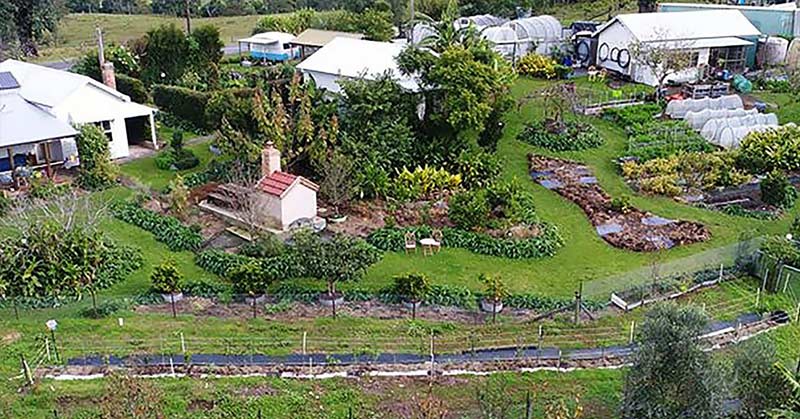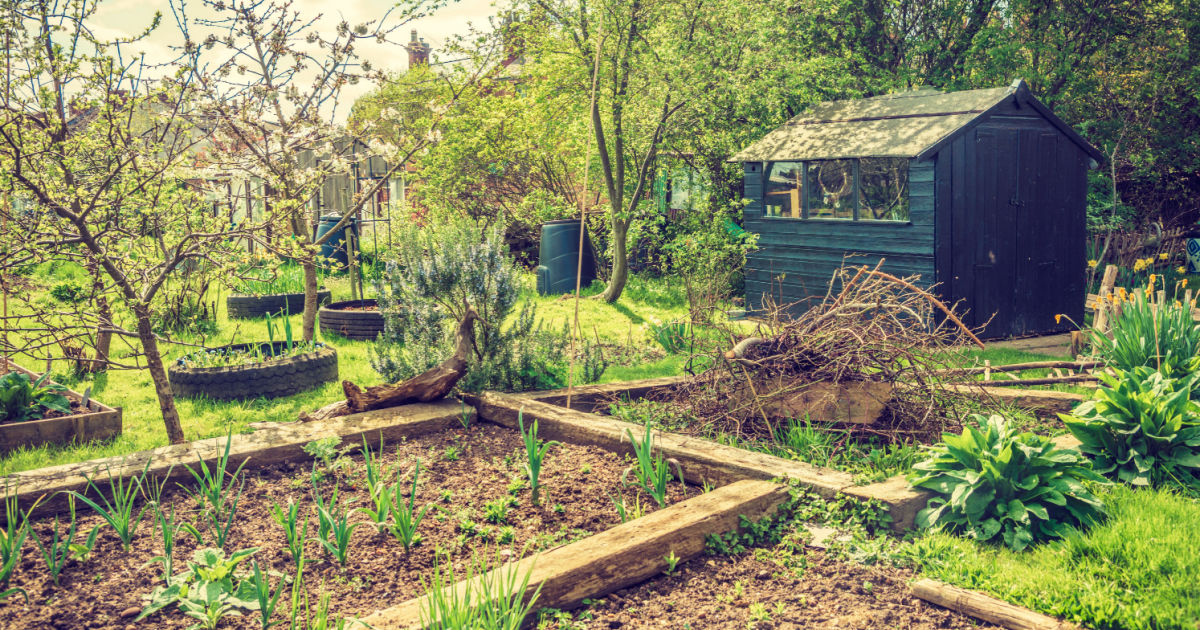Farming is back-breaking, labor-intensive work that requires high input in order to reap any kind of reward. What’s more, it has become increasingly clear that modern agriculture, in particular the large-scale ‘factory’ and ‘monocropping‘ farms that make up the majority of the agriculture in our country, are damaging our environment and our health. While it may seem that environmental degradation is a necessary evil in order to feed all of the people on earth, it does not have this way. There is another way to grow more than enough food for everyone while working with the landscape and with nature, and it is called permaculture.
What is Permaculture?

The term “permaculture” was first coined in 1978 by Bill Mollison, the son of a fisherman from Tasmania. He described the concept as: “The conscious design and maintenance of agriculturally productive systems which have the diversity, stability, and resilience of natural ecosystems. It is the harmonious integration of the landscape with people providing their food, energy, shelter, and other material and non-material needs in a sustainable way.” [1]
Permaculture is based on three main values: care for the planet, care for people, and fair share [2].

A permaculture farm or garden is a “closed-loop system”, which is a system that turns waste into resources. It does not need outside inputs, such as imported fertilizer, but instead provides all of its own needs for itself. This “problems into solutions” mentality was perhaps explained the best by Millison himself: “You don’t have a snail problem, you have a duck deficiency.” [1]
Working with Nature
Essentially, permaculture works with nature as opposed to against it. Practitioners observe the natural processes that occur in ecosystems in the wild and recreate them in their own gardens. They use concepts and knowledge from agroforestry, applied ecology, organic farming, and sustainable development, through tactics such as rainwater harvesting, composting, rotational grazing, no-till soil, and building with natural materials [3]. This type of farming does require some up-front input and work, but once you have established your gardens, it requires little to no work to maintain because it is self-sufficient.
Read: Forest garden with over 500 edible plants requires only a few hours of work monthly
Limestone Farms

One of the best examples of permaculture farming is New South Wales, Australia. Owned and operated by Brett and Nicci Cooper, the farm produces significant amounts of food off of just one acre of land and provides tours and courses to educate people about the benefits of permaculture farming, and how they can apply permaculture principles to their own homes and gardens [4]. The Coopers began their journey in permaculture farming when Nicci experienced some health issues that required her to make some changes to her diet. The pair began growing their own food in a small plot at their home in Newcastle, and gradually started to learn and apply the permaculture principles to their garden.
Eventually, they moved out to a home with more land where they could expand the operation.

Two years later, they had a thriving farm and began putting together veggie boxes for their friends and neighbors. Today, Brett supplies some fifty families in the area with fresh produce [5]. The farm uses swales to bring water to the garden, which are ditches dug on a contour to harvest rainwater. Perennial plants grow along the swales to receive maximum benefit from the water. The ground is covered with self-seeding, edible cover crops to protect the soil, and the farm uses no-dig garden beds to hold many of its crops. Finally, they have chickens and ducks that roam on the property to fertilize and lightly till the soil [4,5].
Read: How One Man Turned His Backyard Garden Into a Full-Fledged Community Farmers Market
Permaculture Can Change Lives

According to Brett, permaculture has had a profoundly positive effect on himself and his family. They are eating better than they ever have before, and are healthier and happier because of it. But the Coopers say that permaculture isn’t just about growing food, it’s about a way of life. “Permaculture is not just gardening, it’s not just organics, it’s not just passive living,” says Brett. “It’s the whole package.” [5]
A Better Way to Live

He emphasizes that there is a better way to live, but not everyone has to move out of the country and start their own farm to be sustainable and adopt some of the principles of permaculture. “It’s just the footprint you leave, it’s the little things you do. It’s about trying to be sustainable- if you can supply yourself with a few herbs and veggies, fine if you can reduce the amount of time you need to drive a vehicle, fine- just look at all the little things you can do. The sheer fact that you are trying to reduce your footprint on this planet means that you will make a difference.” [5]
Our Impact

Permaculture shows that the impact humans have on the earth does not have to be destructive, but can actually be a source for healing our environment, and Brett hopes that Limestone Permaculture can serve as an inspiration to all who visit. “I want them to feel the way I feel,” he says. “I suppose it’s like all good things in life- when you experience something that’s really, really good and puts a smile on your face every day, why wouldn’t you want to share it?”
Keep Reading: Tomatoes Hate Cucumbers: Secrets of Companion Planting and Popular Planting Combination
Sources
- “Permaculture: You’ve Heard of It, But What the Heck Is It?.” Modern Farmer. Brian Barth. April 19, 2016.
- “The 12 Principles of Permaculture: A Way Forward.” Ethical. Elizabeth Waddington. April 23, 2019.
- “WHAT IS PERMACULTURE? AND HOW TO APPLY IT TO YOUR GARDEN.” Natures Path. Nan Fischer. August 7, 2018.
- Limestone Permaculture
- “Beautiful 1-Acre Small Scale Permaculture Property | Limestone Permaculture Farm Tour.” Youtube. Happen Films. 2016.

